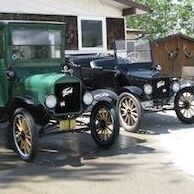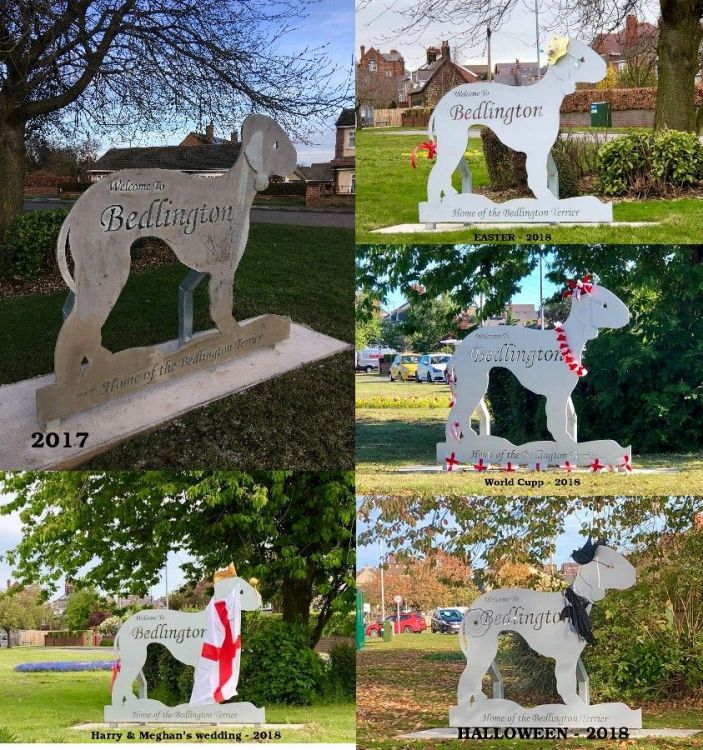Contributor Leaderboard
Popular Content
Showing content with the highest reputation on 22/10/18 in all areas
-
Can't find 'Rope boy' - just 'Rope mam' = A man employed to maintain and extend, splice or install haulage ropes. Other than HPW - Geoff Glass & Alan Dickson (Barnton Facebook group) two of the web sites I have used for pit terms are :- https://www.healeyhero.co.uk/rescue/glossary/glossary.htm & http://www.dmm.org.uk/books/terms_a.htm Nothing about Rope man or boy in the dmm list. NB. the healeyhero site http://www.healeyhero.co.uk/rescue/glossary/glossary.htm t says :- his site is Glossary of words that are generally specific to the mining industry: Some have a two or three fold meaning, some have gone out of use, some are local to Derbyshire, Leicestershire, South Yorkshire and to Nottinghamshire, and others are general to the British Coalfields. As there wasn't a reference to Rope boy I looked at Haulage (from the Rope man definition) and it has this :- Haulage Boy, (1) aged 13 to 18 usually employed lashing or clipping and un-clipping tubs on an engine driven (moving) haulage rope on main roads or pit bottom area. Haulage boy (2) could also be one say 15 years plus employed getting tubs or jotties of supplies to a face and empties back in panel gates by engine driven haulage rope, or ganging same by a pony. The age of starting work was 13 from 1880s up to 1913, then 14 from 1930s to 1948, 15 up to 1960s, thereafter 16 plus. Haulage boy (3) generally a young boy 13 to 15 assisting an experienced person doing the above jobs (description sometimes varied pit by pit).1 point
-
1 point
-
1 point
-
Alan,hae yi checked oot anywhere ti see if thi pit dictionaries mention the Gummers?...a once saw one come adrift from the latches when we were cutting the face and it fell inti thi picks...wat a mangled mess it was..solid steel casings ripped like a piece of old rag ...seeing that made me respect this machine's power even more!...many a time a saw lads who were at the jib,scuffling wi a big filler's shuul,as we were jibbing in ready ti cut thi face,and they wud get a wee bit too close ti thi picks...and the shuul wud be snatched oot their hands and taken up inside the cut by the back picks,only ti be thrown oot a tangled mess wi nea resemblance to the shuul that was!1 point
-
If I leave this world tomorrow I will be go contented knowing my life had been enhanced by the Rolley-Way man Scuffling alang wi the Worm & fling Gummer = magic HPW1 point
-
Just as an afterthought,and before I stand corrected...[!]....on a face which was prone to "Laying -on",the cutterman following behind the machine,that is where the cutter has just passed,would push a prop under the cut so far,and wedge it up by inserting another prop crossways-on underneath the first one,and in doing so,would serve to support the coal seam,and prevent the jib becoming fast. At Choppington High Pit,we called these "Judd-Stays"....and don't ask me why!..it was just a term carried on through generations of cuttermen and coalfillers at the pit.I never heard that term used anywhere else at any other pit. These stays were placed under the cut at intervals throughout the face ..usually a few yards apart,or wherever the cutterman's marra ahent the machine thowt it was nessissarry....... Cheers!1 point
-
Hi Canny Lass,and ye'all! Alan Dixon's right aboot thi Rolleywayman.He had he's cabin at or near the shaft bottom area,where he kept his gear.His main duties were ti maintain the rolleyway..[Railtracks] ...in good order,which was a doddle at dry pits like Bedlington A pit...[the Aad pit],where the sleepers weren't subjected to rot,and the nails and dogs kept the rails tight . If ye cudda been doon Choppington High Pit,or Bates 3/4 seam,or Hauxley,where Geoff Glass came from..[assuming it's the Geoff that came ti thi Aad pit when Hauxley pit closed..],and ye saw 40 or 50 yards..[or more!],of rolleyway....floating just under the water,where the water cud be three feet [or more!] deep.....then that became a nightmare for the set-lads who had ti travel in with long sets of materials /girders/machinery ..etc....when the "Way" just collapsed and the rails parted company from the sleepers!! This isn't summik that's ivvor mentioned in books aboot mining by so-called experts....nae disrespect to anybody...it's just that pitmen like Geoff,and Mesell',who came from really wet pits, had ti contend wi these conditions ivry day. Choppington High Pit had nae rails in the Mothergates,only in the Tailgates,so we had to trail everything inbye on the rough-shot stony ground,and the Rolleywayman had nae work ti dae in them roadways!! "Scuffling" was , as Alan Dixon says, cleaning oot the undercut coal in order ti provide for better "Shots",when the seam was drilled and fired .[Edit...not primarily though!!see notes further down!!] The only time in recent years after the war,that a "Scuffler" was needed ti follow the Coalcutter up thi face was if the Cutterman didn't fix a "Gummer" ti thi front-end [Cutting-end] of the cutter...this cud be cos the Gummer was lost in the goaf,or THROWN into thi goaf after cummin adrift from the cutter and gettin chowed up wi the picks on thi cutter jib...which happened!! The Gummer's other name was a "Scuffling Bucket",and there were two types. 1] The Worm Gummer 2] The Fling Gummer The first one was so-named cos it had a large "Worm" shaped blade rotating on a shaft, which was driven by a "Dog"gear system,on the cutting -end,and which was encased in a "Bucket-shaped" housing.The gummer was "hung" onto the cutting end and held by two latches.During cutting operations,the Gummer/worm collected the small coal scufflings,which the cutter picks brought out from the cut, ..["Duff"],and deposited them in a neat continuous heap behind the cutter in the cutting track.The undercut coal was relatively clean,but not perfect!! ..[Each coalfiller had to "Duff" his own "Stretch..or "Stint",by shovelling all thi duff onto the conveyor belt before firing his shots so people could travel the face.] The second one was equally hung onto the same latching points as the first one,but the orientation of the scuffling cycle was totally different!..The "Fling" Gummer was so-named cos it had a heavy-duty!!..set of three blades ,again housed in a really heavy casing,and again,driven by the same gear "Dog",only this was designed to collect the scufflings from the cutting jib,and literally "fling"them over the face conveyor belt and into the goaf..[waste area where coal has previously been extracted].This was the best system,cos the fillers had very little duff to clean up before starting to fire and fill off the coal. I must add that the intention of "Scuffling " the cut,wasn't primarily to give the coalfillers better shots,[though it was a bonus when the cut was clean!],it was to prevent the the coalcutter jib from becoming "Fast"..["Stuck"],in the cut,and potentially throwing the cutter out and making it dance around. The AB15 coalcutter weighed three and a half ton,and was nine feet long,two feet wide,and fifteen inches high,and with a six-feet long cutting jib attached,was the most viscious machine ever invented by man,grossly overpowered and underweighted. You had to see a cutter with the picks running, dancing wildly under a low coal face....18 to 20 inches high,or even in a 36 inch- high face, knocking timbers out,picks flying around,throwing the whole machine around,crazily, as if it was made out of balsa wood..trapping a coalcutterman up against a steel Desford chock...[the earliest ones made]...nearly killing the man,to appreciate and respect how viscious these machines were. It only took a bit of "Brass"..[Pyrites],under the cut to catch the picks and Hoy the cutter oot the cut....so the job of hand scuffling behind the machine, was not only hard work,it was also really dangerous,only those who have never seen a machine dancing around,would be complacent enough to get too close to the cutter when it was on "Full-ratch"!...[Fullspeed]. Accidents to one side,the dread of the cutterman was when the face started laying on,[or "Weighting on..],and the roof starts to lower in front of your eyes,the danger here is of the cutter jib becoming "Fast as a kna..er!"....nipped tight by the weight of the lowering seam closing the cut and rendering further cutting advance to a standstill.When this happened we had to drill holes around the jib area,put a wee bit Pooda..[explosives] into the holes,and fire them,so as to release the cutting jib and commence cutting. Aye,it wasn't aal plain sailing was it Alan [or Geoff]! Canny Lass,a hope me lang draan oot explinashin has helped yi oot wi yor qwestyins! Sorry a didn't respond straight away,aav had a lot of stress at yem,and just got back inti thi fold!!1 point
-
Can't see any photos that havn't been posted on the Bedlington groups before but it's good to see them all in one display. There is one mistake - the photo of J. EASTON Bedlington bus, 2 mins 31secs into the video, is not in Bedlington, it's Rothbury. You can see the Rothbury war memorial on the left of the photo.1 point
-
Rolley - Coal truck. Rolley way - Haulage road. Rolley-Way Man - A man whose business it was to attend to the rolley-way and keep it in order. It was also his duty to see that no time was lost in getting the full waggons to the shaft and the empty ones in-bye again. The above copied from another site that lists 'Pit Terminology' = http://www.healeyhero.co.uk/rescue/glossary/glossary.htm And Alan Dickson replied with :- The team that laid and kept the tracks in order down the pit Alan. And the head rolley-way-man, placed all the men at the various non peace work jobs. And Geoff Glass replied with :- Aye he worked behind the coal cutting machine.1 point
-
Canny lass, I found this in the" Durham mining museum- mining occupations". I'm sure HPW will have a better explanation ! also describe a "scuffler" A man whose business it is to attend to the rolley-way and keep it in order. It is also his duty to keep away the work, and see that no time is lost in getting the full waggons to the shaft and the empty ones in-bye again. His wages are about 2s. 9d. for 8 hours, or 3s. 4d. if he stands 12 hours (1849).1 point




